Afrohemian Decor Kitchen Too Stunning to Stay Hidden
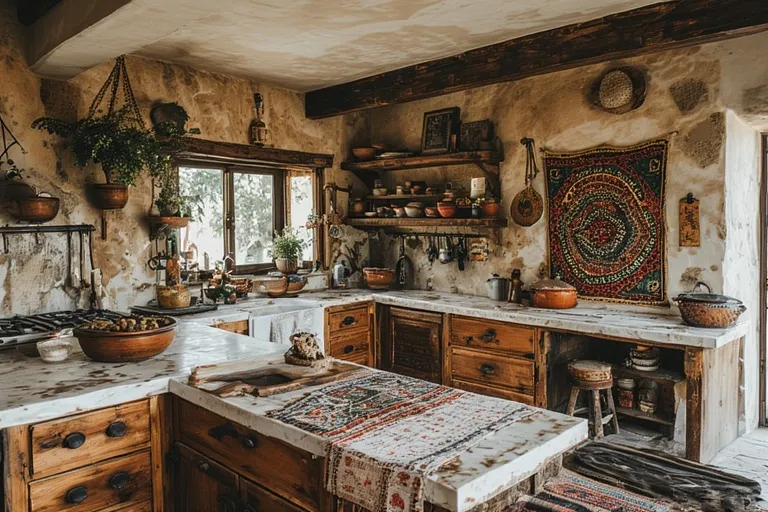
Afrohemian decor kitchen style stands out as a perfect blend of African-inspired warmth and Bohemian free-spirited artistry, creating a space that feels vibrant, soulful, and full of personality. This trend is more than just a design aesthetic—it’s a cultural celebration that brings texture, color, and creativity together in one stunning space. Whether you’re revamping your existing kitchen or starting from scratch, embracing Afrohemian decor can completely transform your cooking area into a lively expression of global artistry and comfort.
What Is Afrohemian Style?
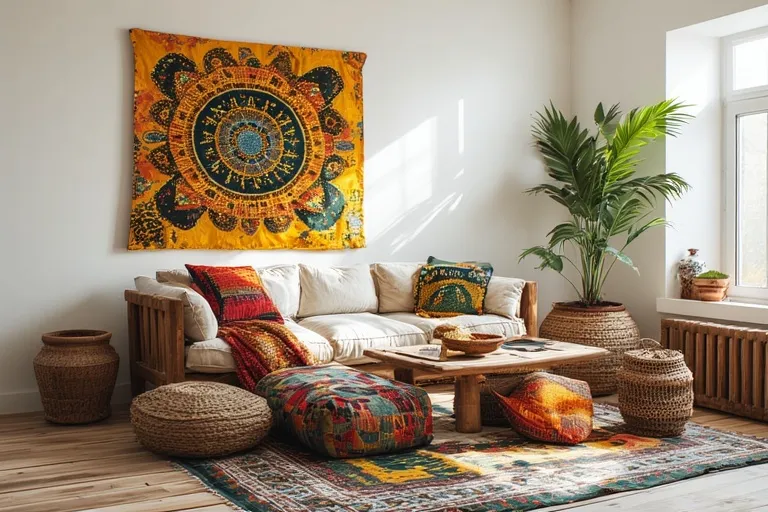
The term Afrohemian is a fusion of “African” and “Bohemian.” It combines the bold, earthy essence of African decor with the relaxed, eclectic charm of Bohemian design. The result? A look that’s layered, colorful, and deeply rooted in cultural storytelling.
Afrohemian style thrives on authenticity. It’s not about following strict design rules but about mixing patterns, textures, and natural materials in a way that feels personal and expressive. From woven baskets and tribal prints to rustic woods and handmade ceramics, this decor style brings global craftsmanship into everyday living.
The Essence of an Afrohemian Kitchen
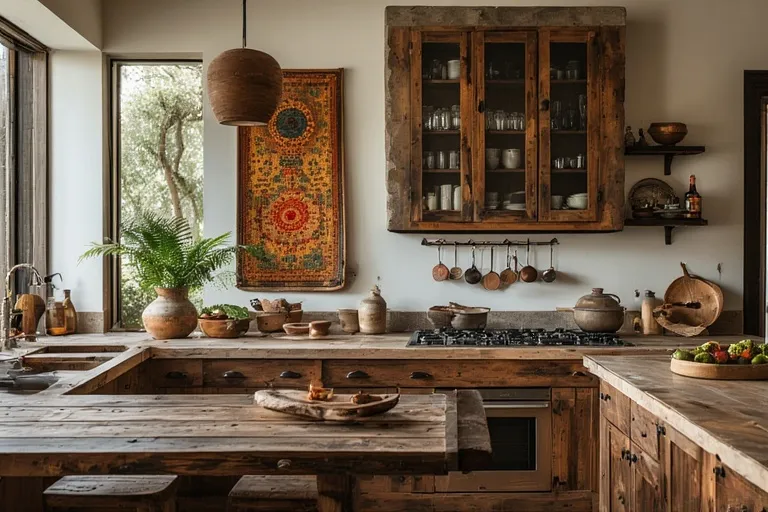
Your kitchen is more than just a functional space—it’s the heart of your home. In an Afrohemian setting, it becomes a warm, inviting hub that celebrates individuality. You should see fall decor ideas
Here are the key elements that define an Afrohemian kitchen:
1. Earthy Color Palette
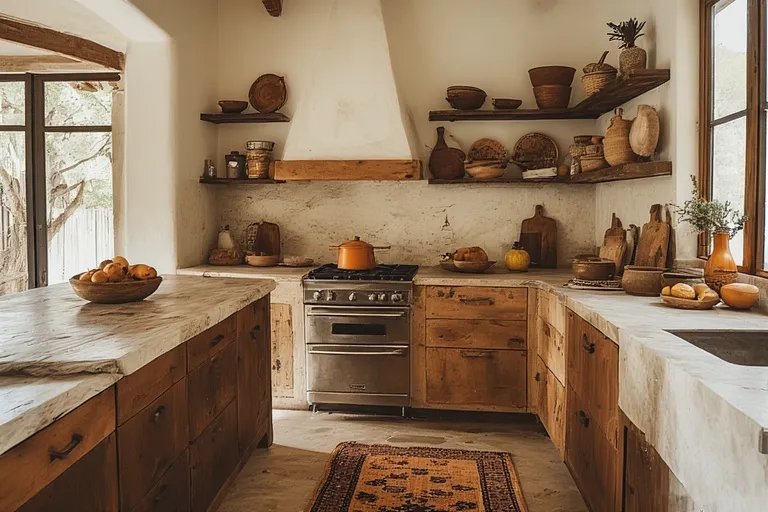
Rich earth tones form the foundation of this style. Think deep browns, terracotta, ochre, burnt orange, and mustard yellow. These colors bring warmth and depth to your kitchen while connecting it to nature and traditional African landscapes. You can balance these tones with neutral shades like beige, cream, or off-white for a harmonious finish.
2. Natural Materials
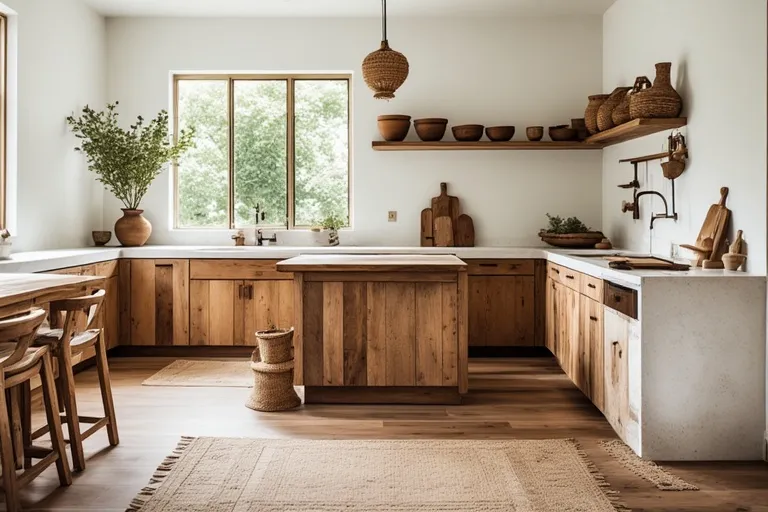
Wood, clay, stone, and woven fibers play a huge role in Afrohemian design. Opt for wooden cabinets with visible grain, stone countertops, and handmade clay pots for authenticity. Even small touches—like wicker pendant lights or jute rugs—can bring a natural, grounded feel.
3. Eclectic Patterns and Textiles
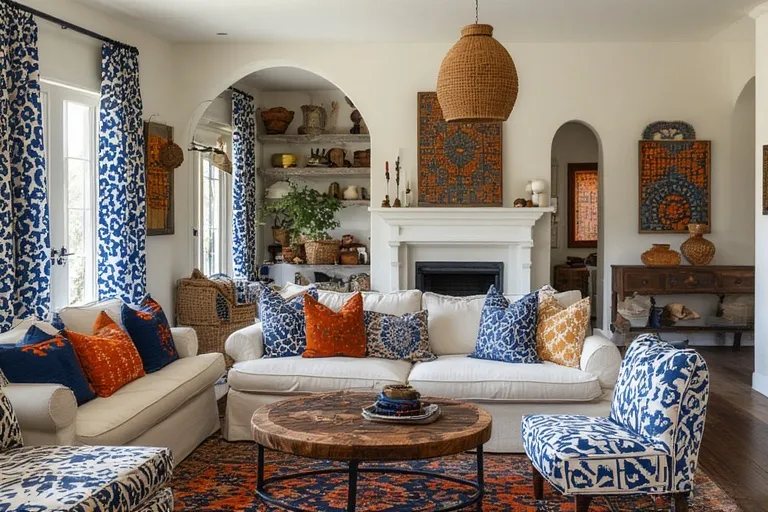
Patterns are a hallmark of Afrohemian decor. You’ll often find African-inspired prints such as mud cloth, Ankara, or Kente fabrics alongside Boho motifs like paisleys and mandalas. Mix and match these patterns in curtains, chair cushions, or table runners to create visual interest.
4. Handmade and Artisanal Touches
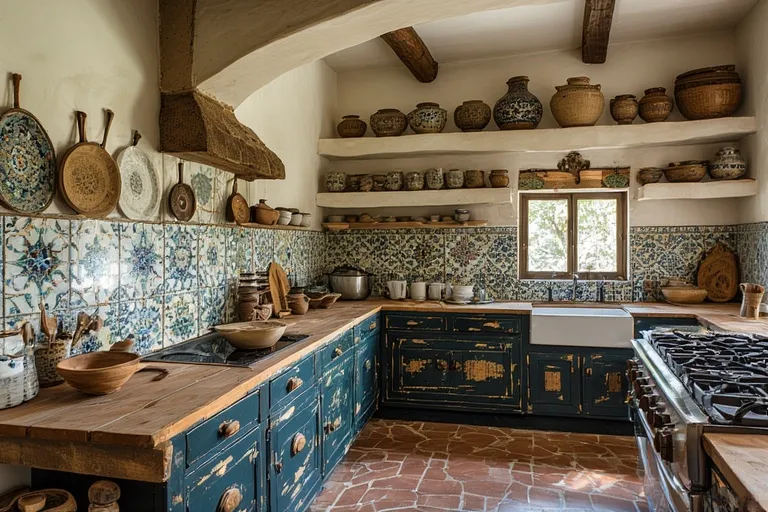
Afrohemian kitchens celebrate craftsmanship. Incorporate handmade ceramics, hand-painted tiles, and artisan baskets. These unique items tell stories of tradition and creativity while adding a human touch that mass-produced decor simply can’t replicate.
5. Plants and Greenery
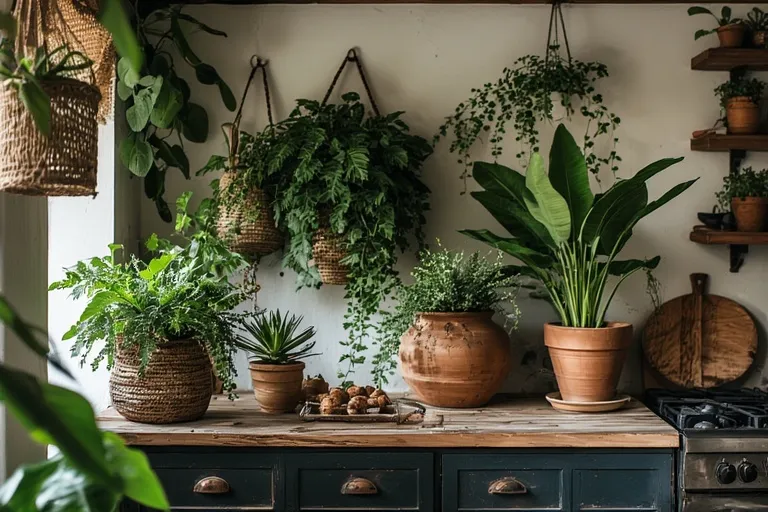
Nothing ties together the natural and artistic elements of Afrohemian decor better than plants. Potted palms, hanging ferns, and succulents can bring life and freshness to your kitchen. Choose clay pots or woven baskets for planters to maintain the organic vibe.
Designing an Afrohemian Decor Kitchen
Now that you know the core elements, let’s explore how to bring them together in your kitchen.
Layout and Lighting
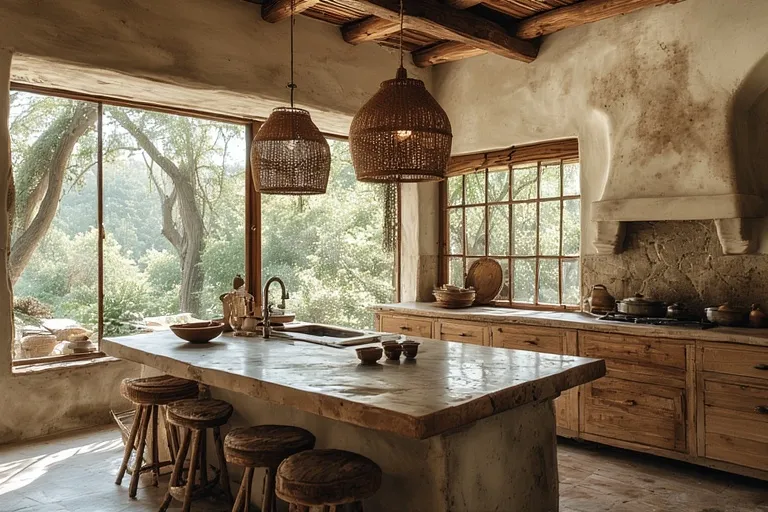
A well-lit space is key. Afrohemian kitchens often feature a mix of natural and warm lighting. Large windows allow sunlight to flood in, highlighting the natural textures. For artificial lighting, woven or beaded lampshades create a soft, cozy ambiance.
Open layouts work beautifully for this style, as they promote flow and openness—a central theme in Bohemian design. Add open shelving to display colorful pottery, spices, and art pieces that tell your story.
Walls and Backsplash
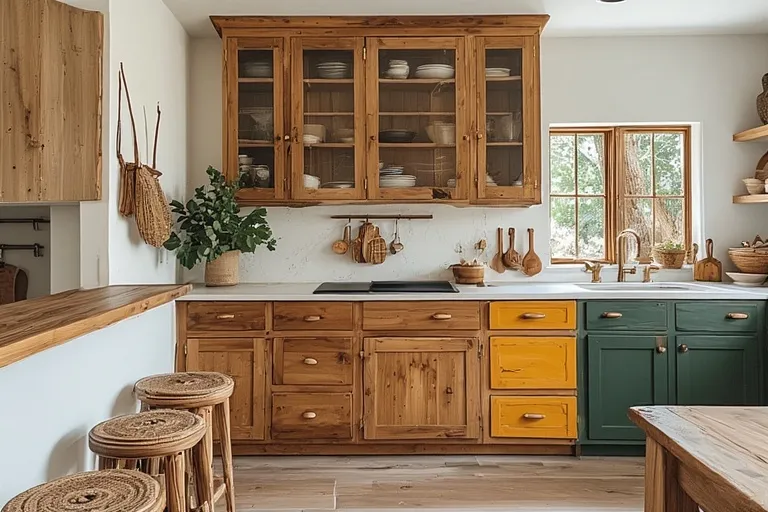
The walls are your canvas. Use earthy paints or textured finishes like limewash or clay plaster. A bold backsplash is a must—consider mosaic tiles in tribal patterns or geometric shapes. If you prefer subtlety, go for neutral tiles with handcrafted detailing.
Cabinetry and Furniture
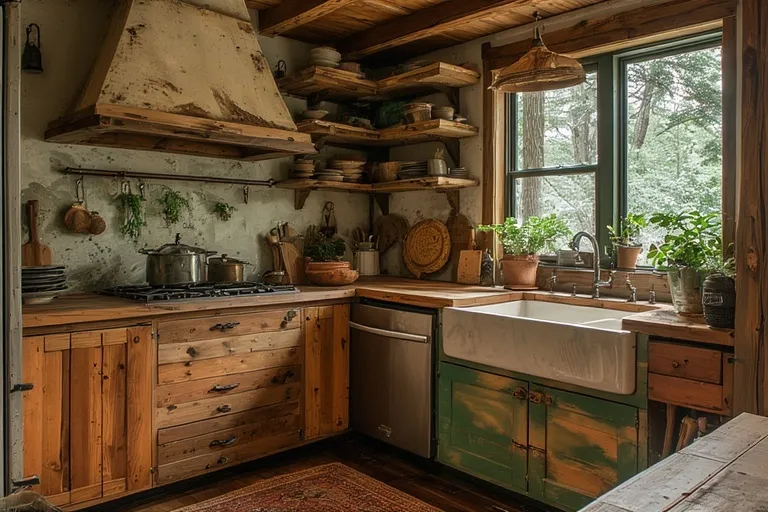
Natural wood cabinets, especially those in teak, oak, or bamboo, enhance the organic essence. For a Boho twist, you can repaint your lower cabinets in bold tones like deep green, mustard, or rust.
When choosing furniture, go for a mix of old and new. A rustic wooden table paired with colorful woven chairs or patterned cushions can create a perfectly imperfect look.
Accessories and Decor
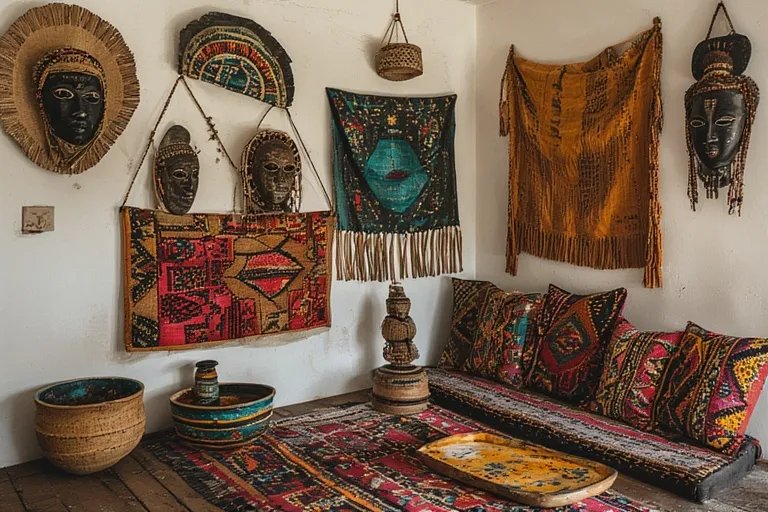
This is where the Afrohemian charm truly comes alive. Decorate with African masks, tribal sculptures, woven trays, and colorful ceramic bowls. Hang textiles or tapestries on the wall to bring movement and pattern. Combine these with Boho-style elements like macramé plant hangers or beaded curtains for that free-spirited flair.
Afrohemian Kitchen Decor Inspiration
Let’s explore a few design combinations that you can use as inspiration for your own kitchen:
- Modern Afrohemian: Combine sleek countertops and minimalist cabinets with traditional African accents. Use black and white patterns for a chic, balanced look.
- Rustic Afrohemian: Expose brick walls, use reclaimed wood, and fill your kitchen with earthen pottery.
- Colorful Afrohemian: Go bold with vibrant blues, reds, and yellows—just balance them with neutral tones to avoid visual overload.
- Minimal Afrohemian: Keep the palette simple and focus on a few handcrafted pieces. The goal is calm yet cultural elegance.
Afrohemian Kitchen Decor Lighting Ideas
Lighting is one of the most expressive aspects of Afrohemian design. It not only illuminates your space but also acts as decor itself.
Use woven pendant lights, bamboo chandeliers, or lanterns made of natural fibers. Candlelight or warm-toned bulbs can help maintain that cozy, earthy atmosphere. For extra flair, consider African-inspired lamp bases or hand-painted light shades that double as art pieces.
Practical Tips for Maintaining an Afrohemian Kitchen
- Declutter regularly to let your statement pieces shine.
- Use natural cleaning products to preserve wood and stone finishes.
- Rearrange decor seasonally to keep the space fresh and inspiring.
- Shop sustainably—support local artisans and ethical brands for authentic decor items.
Why Afrohemian Decor Works So Well in Kitchens
Unlike other styles that focus only on aesthetics, Afrohemian design tells a story. It’s about embracing cultural heritage, artistic freedom, and personal expression. In the kitchen—where food, family, and tradition already intersect—this blend creates a soulful and welcoming environment.
The style’s adaptability makes it suitable for both small apartments and spacious homes. It thrives on personality, not perfection. Every detail—from a carved wooden spoon to a patterned tile—adds meaning and depth.
Conclusion
Afrohemian decor kitchen design is not just a visual style—it’s an emotional experience that transforms your cooking space into a cultural sanctuary. By combining earthy tones, natural materials, and artistic details, you create a kitchen that feels both grounded and globally inspired. Whether you lean toward bold colors or subtle craftsmanship, this aesthetic encourages creativity, comfort, and authenticity—everything a modern kitchen should embody.
1. What is Afrohemian decor kitchen style?
It’s a blend of African-inspired textures and Bohemian artistry for a warm, vibrant kitchen.
2. What colors work best in an Afrohemian kitchen?
Earthy tones like terracotta, brown, ochre, and mustard paired with natural neutrals.
3. How can I decorate my kitchen in Afrohemian style on a budget?
Use DIY decor, thrifted wooden pieces, and handmade baskets or textiles.
4. What materials define Afrohemian decor?
Natural materials like wood, clay, stone, and woven fibers.
5. Are patterns important in Afrohemian design?
Yes, bold African prints mixed with Bohemian patterns create its unique look.

One Comment